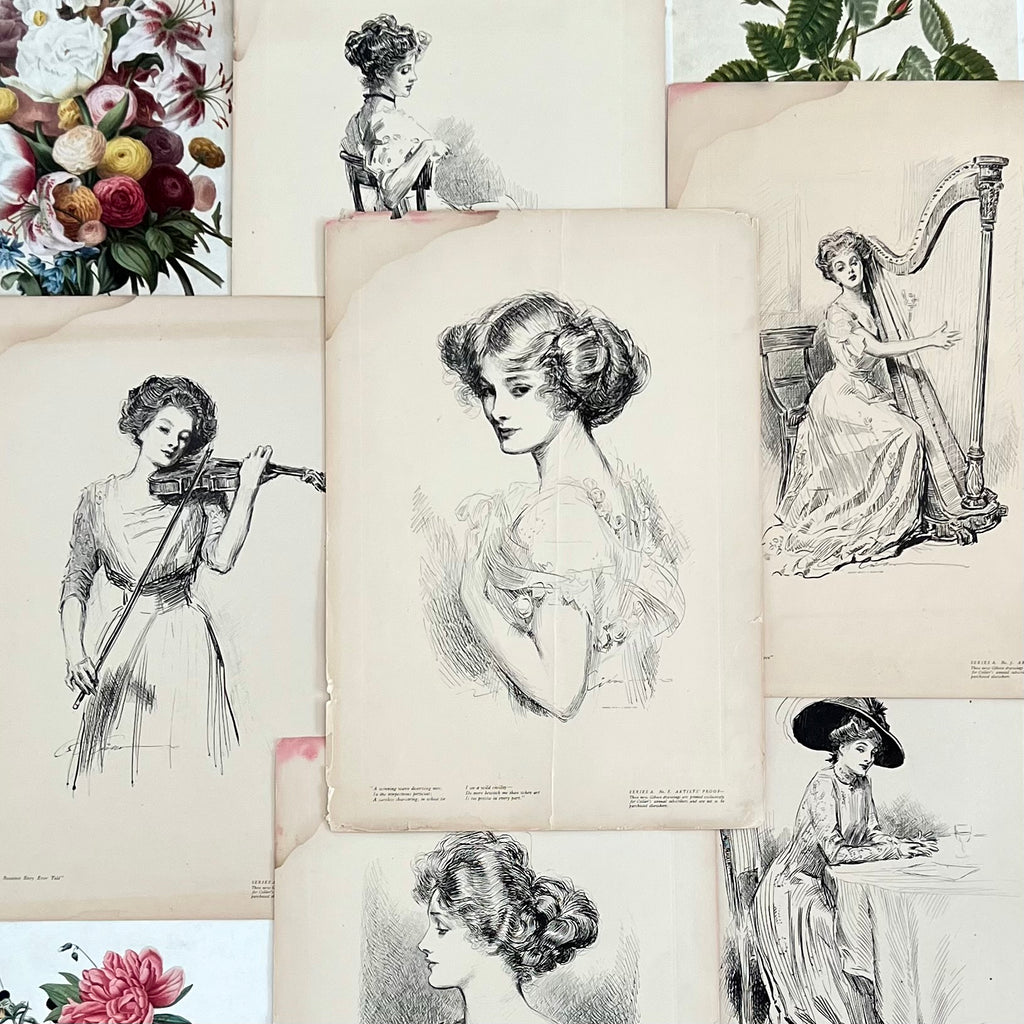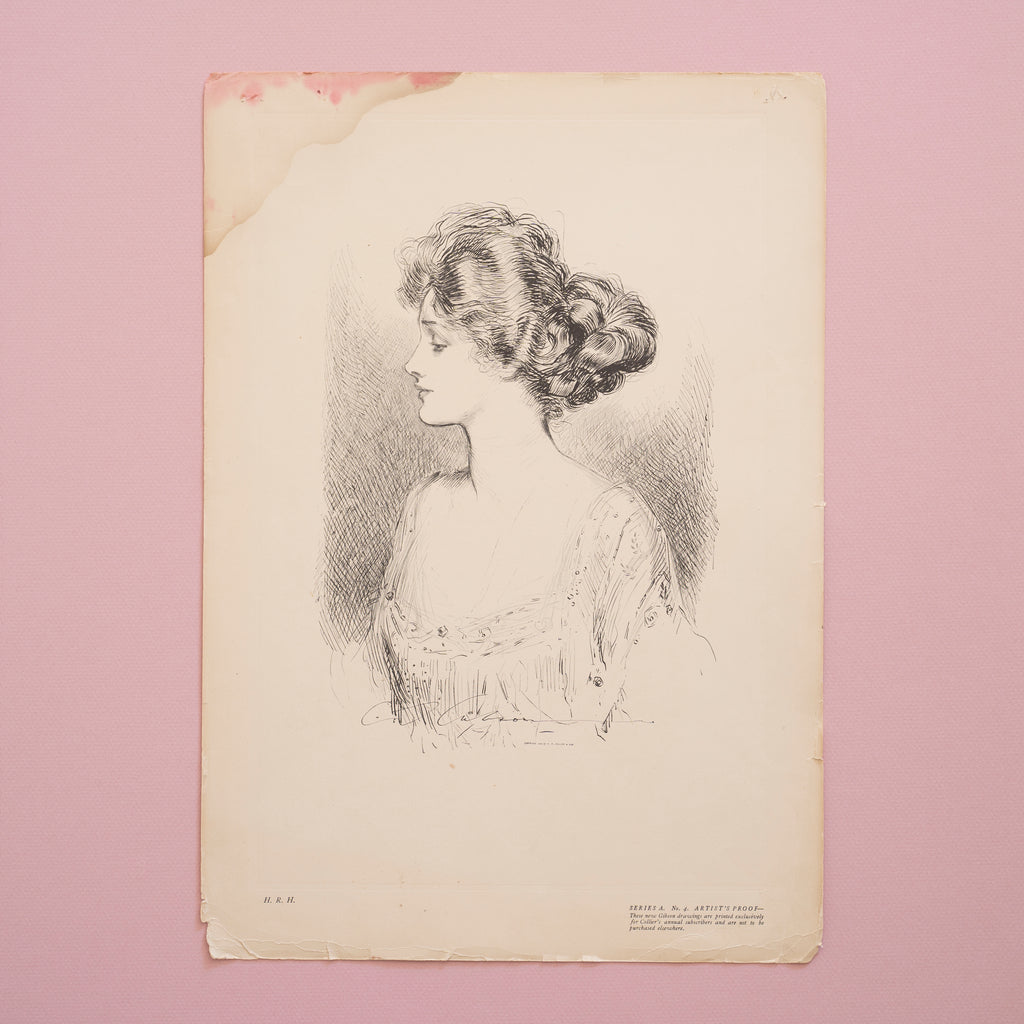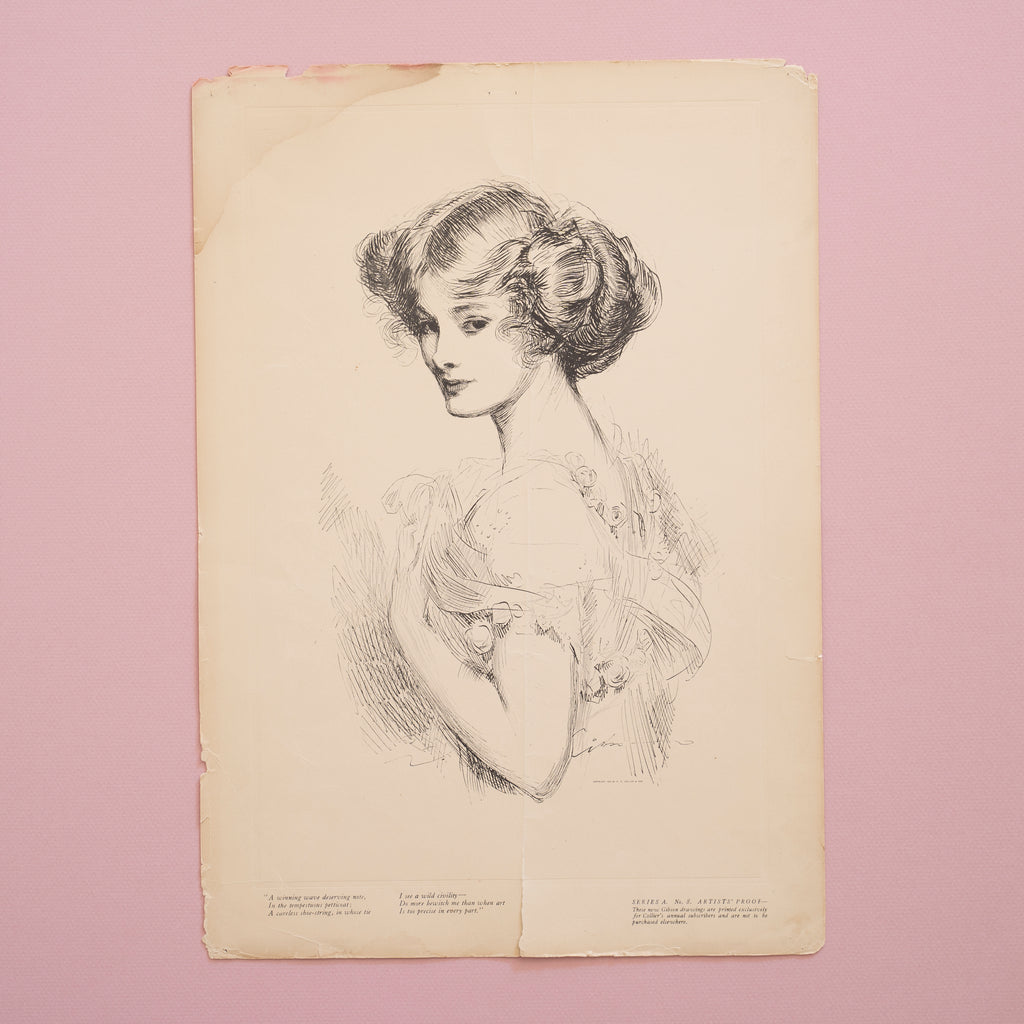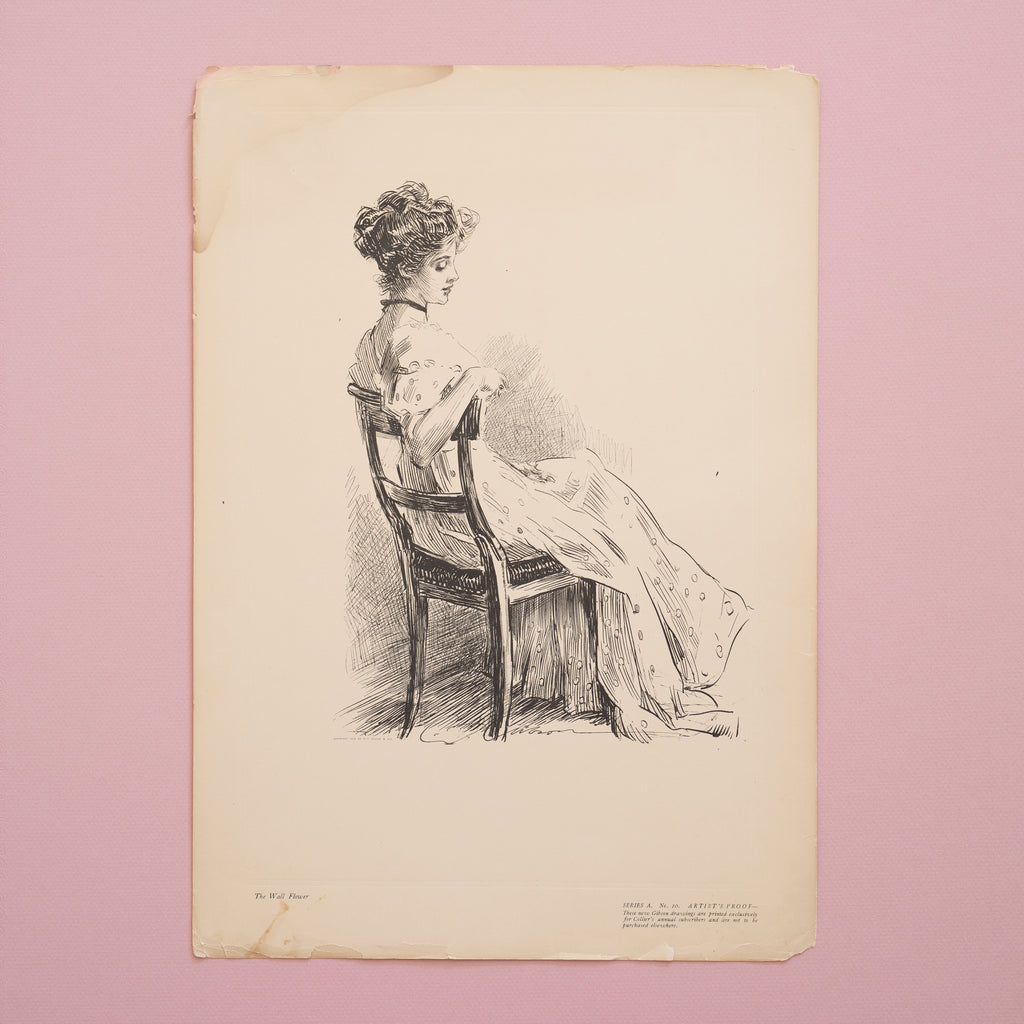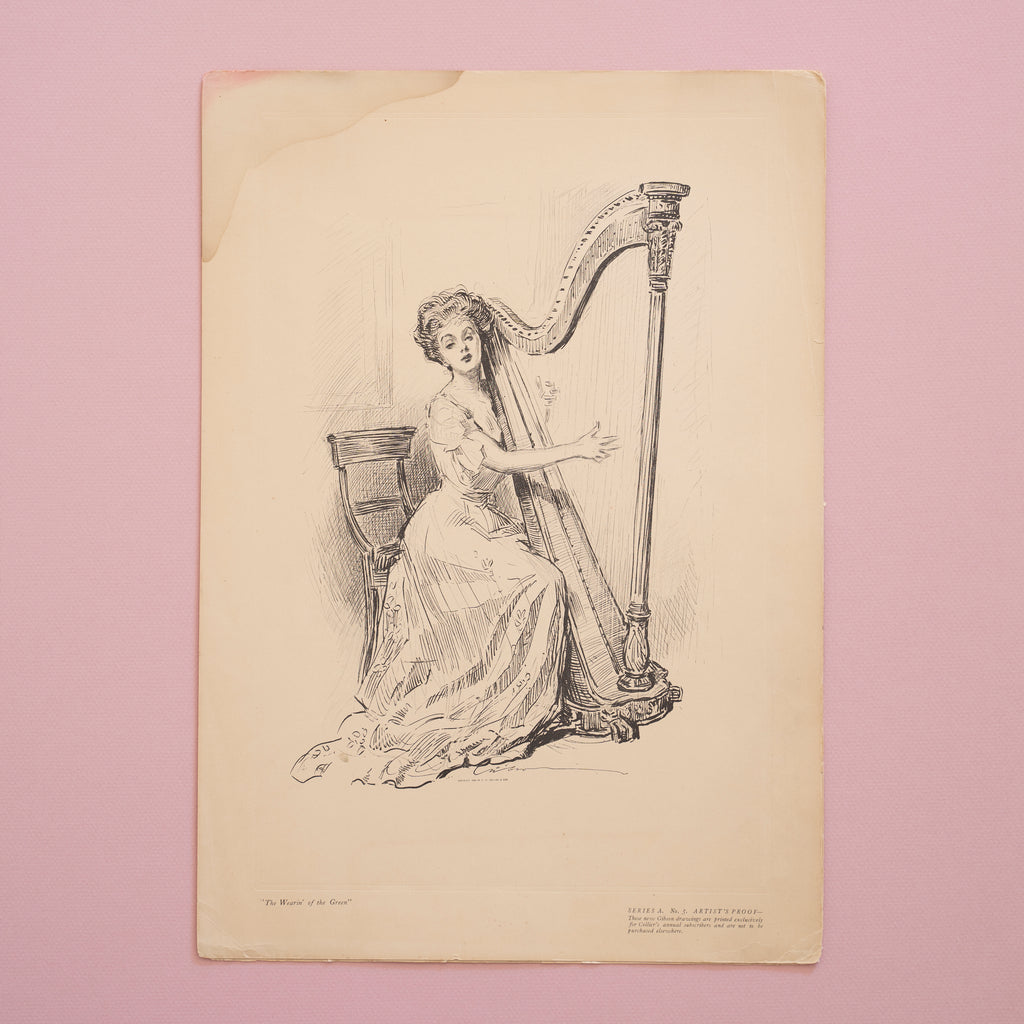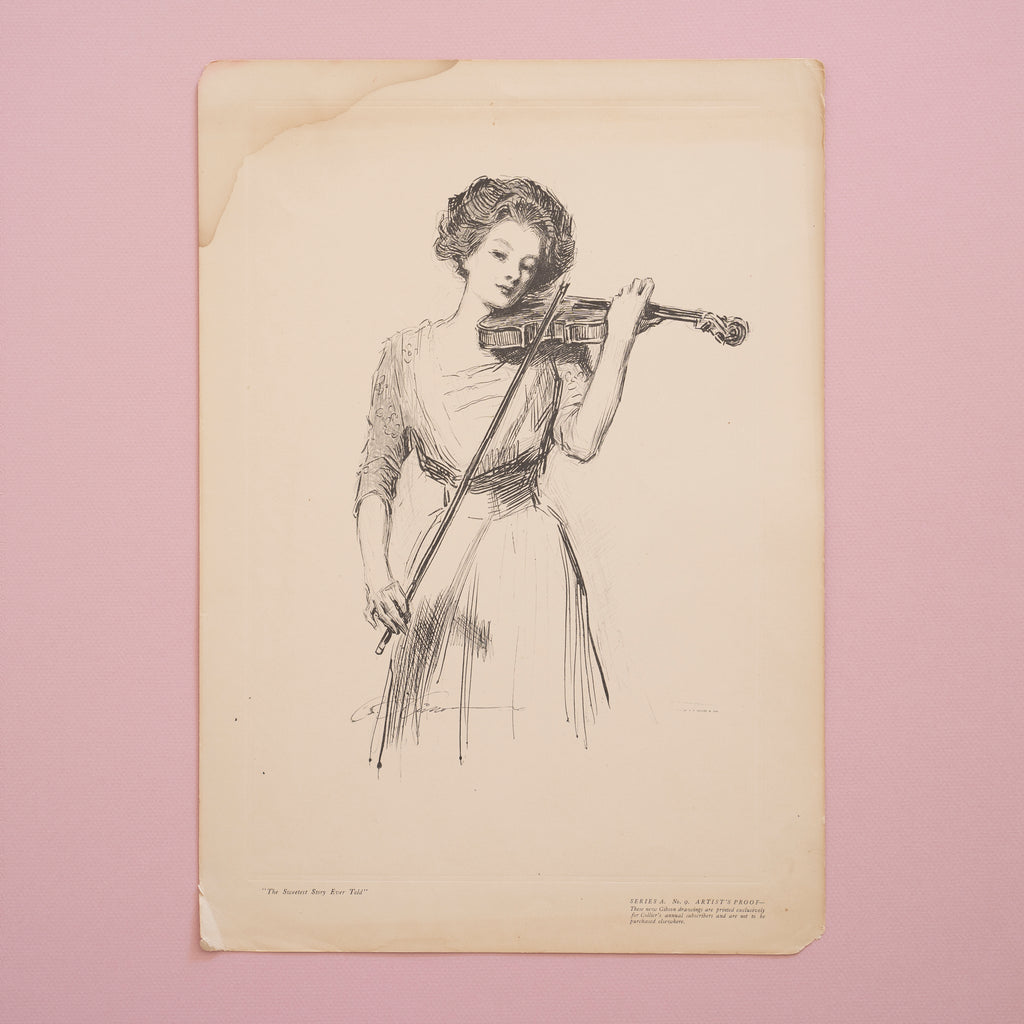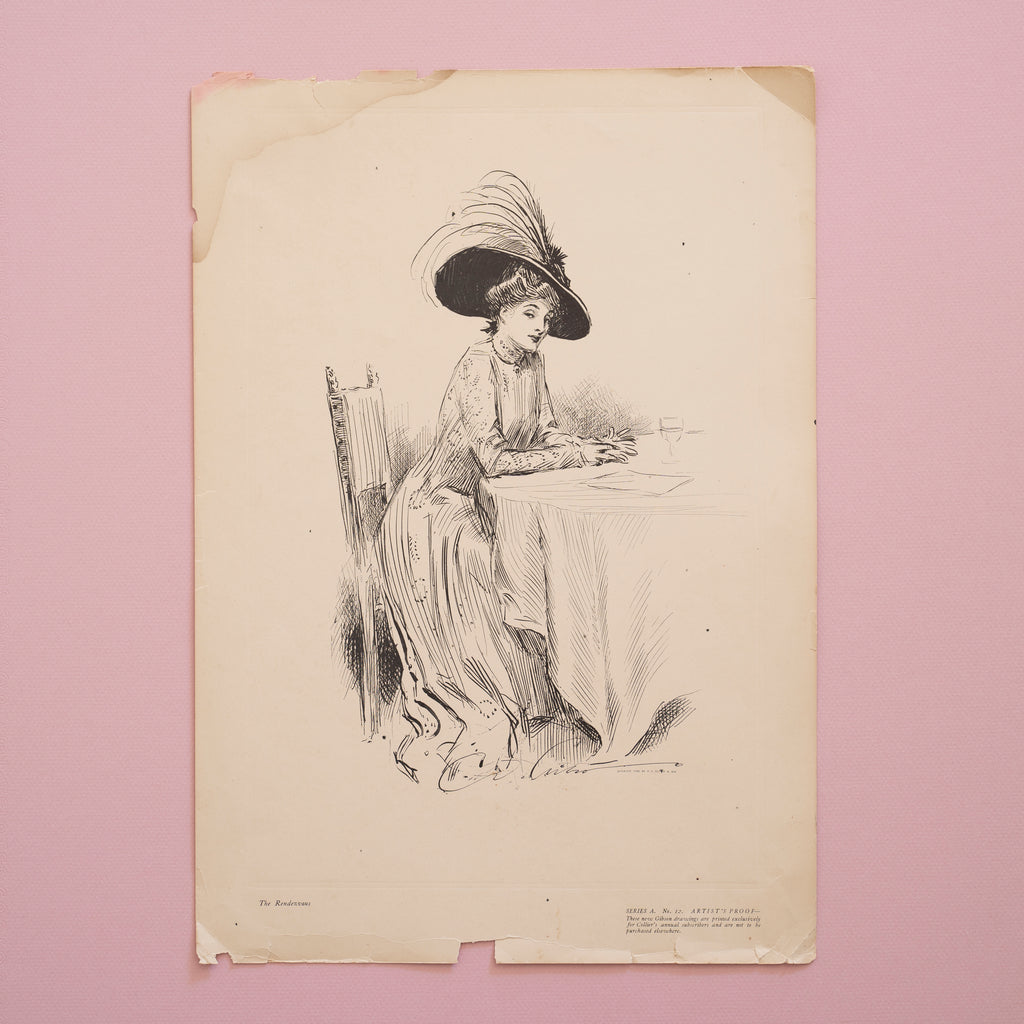11.5" x 16.5"
If there is one thing that visually defines the Edwardian era, it is the Gibson Girl and that short-lived but highly distinguishable S-silhouette. The look was a far cry from the silhouette of the Victorian era -- a skirt expanding at the waist with a very fitted bodice.
Writers in the 1890s and early 1900s described the “New Woman” as an independent and often well-educated, young woman poised to enjoy a more visible and active role in the public arena than women of preceding generations. They agreed that the Gibson Girl represented the visual ideal of this new phenomenon.
The Gibson Girl didn't need anything to enhance her beauty. That, it was implied, came from her demeanour and education as well as her face and body. Men believed – or wanted to believe, or preferred to believe, or were led to believe – that their girls didn't wear any make-up and their beauty was natural.
The ideal body was slender and tall with a voluptuous bust and wide hips. Charles Dana Gibson created the Gibson girl, a woman whose charm and femininity remained intact while being independent, progressive and ambitious.
The Gibson Girl is a controversial figure among feminists today. She was esteemed as a New Woman, educated and interested in public affairs, but she wore a corset and was against suffrage
Unlike the Gibson girl who casually surrendered herself to a life of domesticity, the flapper is remembered as the assertive New Woman who would not allow herself to be enslaved by the institution of marriage.
11 1/2" x 16 1/4" reproduction of Charles Dana Gibson "Gibson Girl" drawings printed exclusively for Collier's Series A. No. 4-12 with title and commentary on bottom corners.



